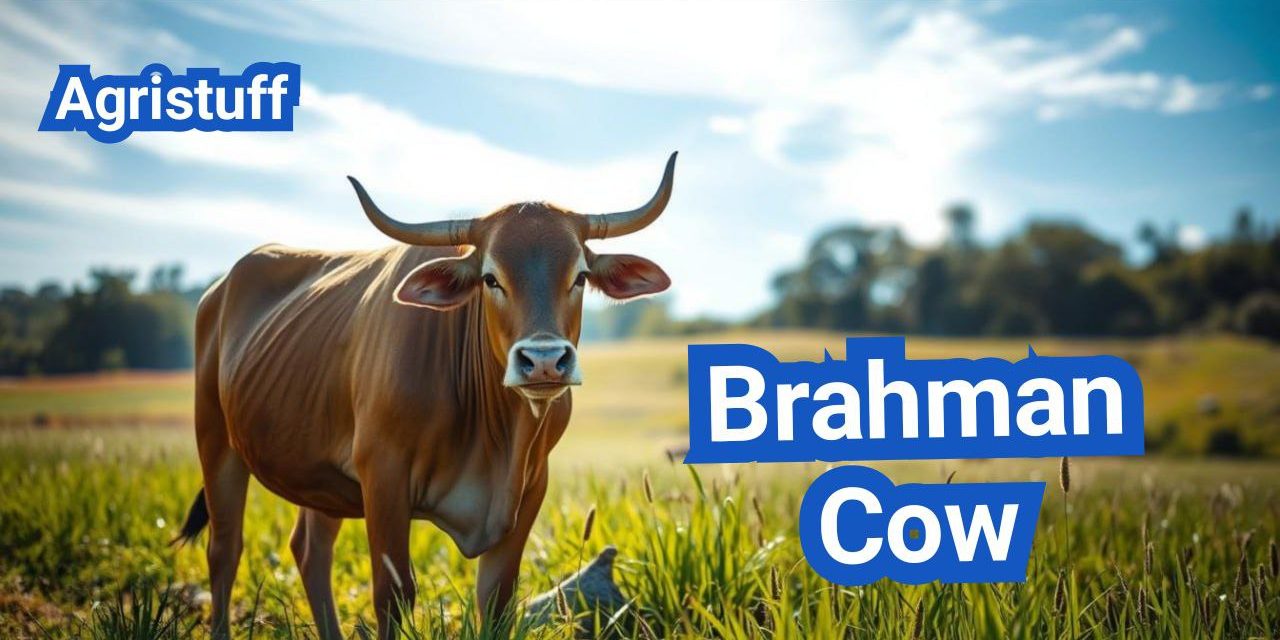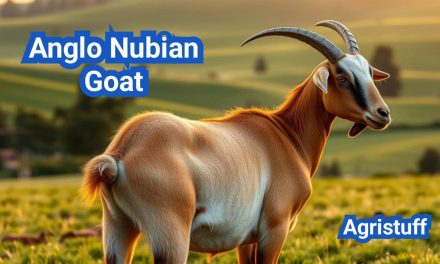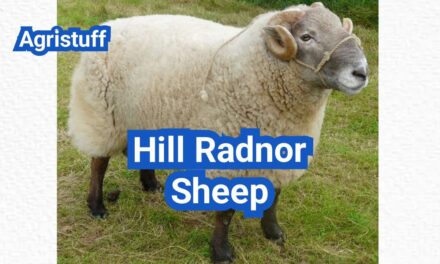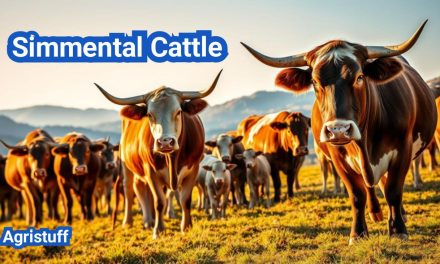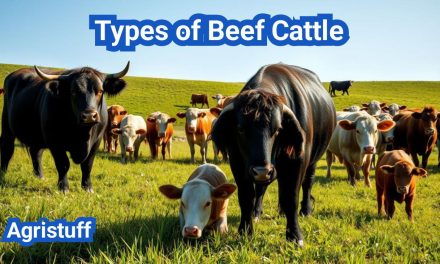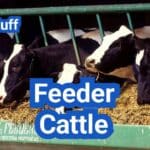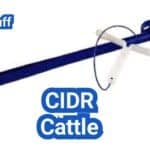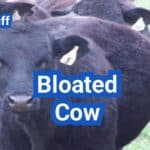The Brahman breed, known for its heat tolerance and hardiness, originated from Bos indicus cattle in India. This breed has become popular worldwide due to its robust characteristics and adaptability to various climates.
Proper care and breeding tips are essential for maintaining the health and productivity of Brahman cows. Understanding their characteristics and needs is crucial for successful cattle farming.
Key Takeaways
- Understanding the origin and characteristics of Brahman cows.
- Importance of proper care for Brahman cows.
- Effective breeding tips for Brahman cow.
- Adaptability of Brahman cows to different climates.
- Significance of Brahman cows in cattle farming.
The Origin and History of Brahman Cattle
Originating from Bos indicus cattle brought from India, the Brahman breed has become a staple in global cattle farming. The history of Brahman cattle is deeply rooted in their Indian origins, with significant influence from breeds such as Guzerat, Nellore, and Gir.
Indian Origins and Development
The development of Brahman cattle began in India, where Bos indicus cattle were prized for their heat tolerance and hardiness. The Indian cattle were selectively bred to enhance these traits, resulting in the robust Brahman breed we know today.
The key Indian breeds that contributed to the Brahman include:
- Guzerat
- Nellore
- Gir
Introduction to the United States
Brahman cattle were first introduced to the United States in the early 19th century. The breed was initially met with skepticism but soon gained popularity due to its adaptability to the hot and humid climates of the southern states.
| Year | Event |
|---|---|
| 1854 | First Brahman cattle imported to the United States |
| 1924 | American Brahman Breeders Association established |
Evolution of the American Brahman
Over time, the Brahman breed in the United States evolved into the American Brahman, a distinct type that was developed through selective breeding. The American Brahman retained the hardiness and heat tolerance of its Indian ancestors while adapting to the American farming systems.
The evolution of the American Brahman was marked by significant milestones, including the establishment of the American Brahman Breeders Association in 1924, which played a crucial role in promoting and developing the breed.
Understanding the Brahman Cow

The Brahman cow, known for its hardiness and heat tolerance, plays a significant role in global cattle farming. This breed has been widely acclaimed for its unique characteristics and adaptability to various environmental conditions.
What Makes Brahman Cattle Special
Brahman cattle are distinguished by their heat tolerance and hardiness. Their ability to withstand high temperatures and humid climates makes them an ideal choice for farming in tropical and subtropical regions. Additionally, Brahman cattle possess a unique physical characteristic – a pronounced hump above their shoulders, loose skin, and large ears, which contribute to their heat tolerance.
Another significant trait of Brahman cattle is their disease resistance. They are generally more resistant to certain diseases compared to other breeds, which reduces the need for extensive veterinary care and makes them a low-maintenance option for farmers.
Importance in Global Cattle Industry
Brahman cattle have become a crucial part of the global cattle industry due to their adaptability and productivity. They are used in various farming systems, from purebred operations to crossbreeding programs aimed at improving the hardiness and productivity of other breeds. The Brahman breed is particularly valued in regions with challenging climatic conditions, where other breeds may struggle to survive.
Their importance extends beyond their adaptability; Brahman cattle also contribute significantly to the improvement of other breeds through crossbreeding. The hybrid vigor resulting from crossbreeding Brahman cattle with other breeds can lead to improved growth rates, fertility, and overall productivity.
Lifespan and Development Stages
The average lifespan of a Brahman cow is between 15 to 20 years, depending on factors such as nutrition, health conditions, and management practices. Brahman cattle go through several development stages, starting from calfhood, followed by weaning, and then entering the breeding phase.
- Calfhood: The initial stage, where calves rely on their mother’s milk.
- Weaning: Calves are weaned and start consuming solid food.
- Breeding Phase: Heifers are bred for the first time, typically between 15 to 24 months of age.
Understanding these development stages is crucial for effective management and ensuring the health and productivity of Brahman cattle.
Physical Characteristics of Brahman Cattle
Brahman cattle are renowned for their distinctive physical attributes that set them apart from other breeds. Their robust build and characteristic features make them a popular choice for various cattle farming operations.
Distinctive Physical Features
Brahman cattle are known for their large size, loose skin, and pendulous ears. These distinctive features not only make them easily recognizable but also contribute to their ability to withstand harsh climates.
Their loose skin is particularly beneficial as it allows for better heat dissipation, a crucial factor in their heat tolerance. As noted by cattle experts,
“The loose skin of Brahman cattle plays a significant role in their ability to regulate body temperature.”
Size and Weight Specifications
Brahman cattle are characterized by their impressive size. Males can weigh between 1,600 to 2,200 pounds, while females typically range from 1,000 to 1,400 pounds.
- Males: 1,600 – 2,200 pounds
- Females: 1,000 – 1,400 pounds
This significant size, combined with their muscular build, makes them a formidable presence in any cattle operation.
The Iconic Brahman Hump
One of the most distinctive features of Brahman cattle is the hump located on their shoulders. This hump is more pronounced in males and serves as a reservoir for fat, which helps during times of nutritional scarcity.
Brahman Cow Horns and Ear Structure
Brahman cattle are also known for their horns and ear structure. Their horns are typically curved and can be quite large, while their ears are long and pendulous, aiding in heat dissipation.
The combination of these features – the hump, horns, and ears – makes Brahman cattle highly adaptable to various environmental conditions.
Brahman Cattle Color Varieties

Brahman cattle come in a multitude of colors, including red, white, gray, black, and brown.
The diversity in Brahman cattle colors is one of their distinguishing features. This variety not only adds to their aesthetic appeal but also reflects the breed’s robust genetic makeup.
Red Brahman Cattle
Red Brahman cattle are known for their deep red color, which can range from a light rust to a dark cherry red. This color variation is a result of genetic factors and is prized for its beauty and uniqueness.
White and Gray Brahmans
White and gray Brahman cattle are also common, with some individuals displaying a pure white coat, while others may have a mix of white and gray, giving them a distinctive appearance.
Black and Brown Brahman Varieties
Black and brown Brahman cattle add to the breed’s color diversity. These darker colors are often associated with the breed’s hardiness and ability to withstand various environmental conditions.
Painted and Patterned Brahmans
Some Brahman cattle display painted or patterned coats, featuring a mix of colors such as white with patches of red, black, or gray. These patterns can vary significantly, making each animal unique.
The variety of colors in Brahman cattle not only enhances their visual appeal but also contributes to the breed’s overall genetic diversity and resilience.
- Key Color Varieties:
- Red Brahman
- White and Gray Brahmans
- Black and Brown Brahmans
- Painted and Patterned Brahmans
Adaptability and Environmental Tolerance
Brahman cattle are celebrated for their exceptional adaptability to diverse environmental conditions. This adaptability is a significant advantage for breeders worldwide, making Brahman cattle a popular choice for various climates.
Heat and Humidity Tolerance
Brahman cattle are renowned for their heat tolerance, which is attributed to their origins in the hot climates of India. Their ability to withstand high temperatures and humidity levels makes them ideal for breeding in tropical and subtropical regions.
Their heat tolerance is due in part to their physical characteristics, such as their short, fine coat and their ability to sweat profusely. This allows them to maintain a stable body temperature even in extreme heat.
Disease Resistance Benefits
Brahman cattle are also known for their disease resistance. They have a natural immunity to many diseases that affect other breeds, reducing the need for extensive veterinary care.
This disease resistance is a significant benefit for breeders, as it reduces the economic impact of disease management and allows for more efficient cattle production.
Adaptability to Various Climates
Beyond their heat tolerance, Brahman cattle demonstrate adaptability to a range of climates. They can thrive in various environmental conditions, from the humid tropics to more temperate zones.
| Climate Type | Brahman Cattle Adaptability |
|---|---|
| Tropical | Highly adaptable, excellent heat tolerance |
| Temperate | Adaptable, with some variations depending on breed |
| Subtropical | Very adaptable, thrives in these conditions |
Comparison to Other Heat-Tolerant Breeds
When compared to other heat-tolerant breeds, Brahman cattle stand out for their overall hardiness and productivity. Breeds like the Santa Gertrudis and Sahiwal also exhibit heat tolerance, but Brahman cattle are particularly noted for their broad adaptability and resistance to disease.
The adaptability of Brahman cattle, combined with their heat tolerance and disease resistance, makes them an excellent choice for cattle breeders in diverse environmental conditions.
Essential Brahman Cow Care Guidelines

Effective Brahman cattle care encompasses a range of practices designed to promote their health and productivity. Providing the right care is crucial for maintaining the overall well-being of these animals.
Basic Health Maintenance Protocols
Basic health maintenance is foundational to Brahman cattle care. This includes providing clean water, nutritious feed, and appropriate shelter. Regular cleaning of living areas is also vital to prevent disease.
Key health maintenance practices involve monitoring the cattle’s living conditions and ensuring they have access to necessary resources. This proactive approach helps in early detection of potential health issues.
Vaccination Schedules and Requirements
Vaccinations play a critical role in protecting Brahman cattle from diseases. Developing a vaccination schedule with a veterinarian is essential to ensure the cattle receive the necessary vaccinations at the right time.
- Consult with a veterinarian to determine the appropriate vaccination schedule.
- Keep records of vaccinations administered to each animal.
- Ensure boosters are given as recommended.
Parasite Control Strategies
Parasite control is another crucial aspect of Brahman cattle care. Implementing strategies to control internal and external parasites helps maintain the health of the cattle.
Effective parasite control involves a combination of management practices, including pasture rotation and the use of parasite control medications when necessary.
Regular Health Checks and Monitoring
Regular health checks are vital for early detection of health issues in Brahman cattle. Monitoring their condition helps in identifying problems before they become severe.
Farmers should regularly inspect their cattle for signs of illness or stress, such as changes in appetite, unusual behavior, or visible symptoms of disease.
Brahman Cow Feeding Guide

Understanding the nutritional requirements of Brahman cows is vital for optimizing their growth, reproduction, and overall well-being. A comprehensive feeding guide ensures that these cattle receive the necessary nutrients at different stages of their lives.
Nutritional Requirements by Age
Brahman cattle have different nutritional needs at various stages of their development. Calves require a diet rich in protein and energy to support their rapid growth. As they mature, their nutritional needs change, with adult Brahmans requiring maintenance-level nutrition.
The nutritional requirements for Brahman cows can be broken down into several stages:
- Calves (0-6 months): High-protein and high-energy diet for growth and development.
- Weaners (6-12 months): Continued high-protein diet with a gradual introduction to forage.
- Yearlings (1-2 years): Balanced diet that supports growth without excessive weight gain.
- Adults: Maintenance-level nutrition with adjustments based on reproductive status and activity level.
Pasture Management for Brahmans
Effective pasture management is crucial for Brahman cattle, as it directly impacts their nutritional intake. Rotational grazing is a recommended practice to maintain pasture health and productivity.
Pasture management strategies include:
- Dividing pastures into smaller sections to control grazing.
- Rotating cattle to allow pastures to recover.
- Monitoring pasture quality and adjusting grazing plans accordingly.
Supplemental Feeding Strategies
While pasture provides the bulk of the diet for Brahman cattle, supplemental feeding is often necessary to ensure they receive all necessary nutrients, especially during times of low pasture quality or high nutritional demand.
Supplemental feeding strategies may include:
- Providing hay or silage during dry periods.
- Using concentrates to boost energy and protein intake.
- Offering mineral supplements to address specific nutritional deficiencies.
Water Requirements and Management
Adequate water supply is essential for Brahman cattle, as it affects their overall health and productivity. Clean, fresh water should be available at all times.
Water management practices include:
- Ensuring access to clean water sources.
- Regularly inspecting water delivery systems for leaks or contamination.
- Providing shade near water sources to reduce heat stress.
By understanding and implementing these feeding strategies, cattle producers can optimize the health and productivity of their Brahman cows.
Housing and Facility Requirements

Proper housing and facilities are crucial for the health and productivity of Brahman cattle. Effective management of these aspects is essential for successful Brahman cattle farming.
Pasture Space Needs
Brahman cattle require adequate pasture space to graze and roam. The amount of pasture space needed can vary depending on factors such as climate, soil quality, and the number of cattle. Generally, it is recommended to provide at least 1-2 acres per head to ensure sufficient grazing area.
A well-managed pasture not only provides nutrition but also helps in maintaining the overall health of the cattle. Overgrazing should be avoided as it can lead to soil erosion and reduced pasture quality.
Shelter Considerations for Different Climates
Shelter is a critical component of Brahman cattle housing. The type and design of shelter depend on the climate and region. In hot climates, shelters should provide shade and ventilation to protect the cattle from heat stress.
“Shade is essential for cattle welfare in hot climates, as it significantly reduces the risk of heat stress.”
In colder climates, shelters should be designed to provide protection from wind and rain. The shelter should be well-ventilated to prevent moisture buildup, which can lead to health issues.
Fencing Requirements and Options
Fencing is vital for managing Brahman cattle, as it helps to keep the cattle contained and protects them from predators. The type of fencing used can vary, but it should be sturdy and well-maintained.
| Fencing Type | Description | Cost |
|---|---|---|
| Barbed Wire | Traditional and cost-effective, suitable for large areas. | $0.50 – $1.50 per foot |
| High-Tensile Wire | Durable and long-lasting, ideal for perimeter fencing. | $1.00 – $3.00 per foot |
| Electric Fencing | Effective for rotational grazing and temporary fencing. | $0.30 – $1.00 per foot |
Handling Facilities Design
Handling facilities are crucial for the safe and efficient management of Brahman cattle. A well-designed handling facility includes a crowding pen, chute, and headgate.
The design should consider the natural behavior of the cattle, with curved alleys and gradual transitions to reduce stress.
By investing in proper housing and facilities, farmers can improve the health, productivity, and overall welfare of their Brahman cattle.
Brahman Cattle Behavior and Handling

Brahman cattle, known for their intelligence and strong will, require a thoughtful approach to handling. Their behavior is shaped by their temperament, which can be influenced by genetics, environment, and handling practices.
Understanding Brahman Temperament
The temperament of Brahman cattle is a critical factor in their behavior and handling. Generally, Brahmans are known for their calm and docile nature, but like any cattle, they can become aggressive if frightened, threatened, or mishandled. Understanding and respecting their temperament is key to safe and effective handling.
Key Temperament Traits:
- Intelligence: Brahmans are highly intelligent and can be trained with positive reinforcement.
- Strong Will: They have a strong will and can be stubborn at times, requiring patient handling.
- Docility: Generally docile, but they can become aggressive under certain conditions.
Effective Handling Techniques
Effective handling of Brahman cattle involves a combination of understanding their behavior, using appropriate facilities, and applying gentle, consistent handling techniques. Moving slowly, avoiding sudden noises, and minimizing stress are crucial.
Best Practices for Handling:
- Move calmly and deliberately around the cattle.
- Use handling facilities that are well-designed and maintained.
- Avoid using force or loud noises.
Training and Socialization Methods
Training and socialization are vital for Brahman cattle, helping to develop a calm and trusting temperament. Early handling and regular interaction can significantly improve their behavior.
| Training Method | Description | Benefits |
|---|---|---|
| Positive Reinforcement | Rewarding desired behavior | Encourages trust and desired behavior |
| Early Handling | Handling cattle from an early age | Reduces stress and improves temperament |
| Regular Interaction | Regular human interaction | Improves calmness and reduces aggression |
Safety Considerations When Working with Brahmans
Safety is paramount when handling Brahman cattle. Their size, strength, and potential for aggression if mishandled necessitate careful handling practices.
Safety Tips:
- Always be aware of your surroundings and the cattle’s behavior.
- Use appropriate handling equipment and facilities.
- Ensure that all handlers are trained and experienced.
Brahman Breeding Programs

Brahman breeding programs involve a combination of selecting quality breeding stock, optimal breeding age, and careful management during pregnancy and calving. Successful breeding programs are essential for maintaining the health and productivity of Brahman cattle.
Selecting Quality Breeding Stock
Selecting the right breeding stock is critical for the success of any Brahman breeding program. Quality breeding stock should possess desirable traits such as heat tolerance, disease resistance, and high fertility. Farmers should evaluate the genetic lineage of potential breeding animals to ensure they are selecting stock with the best characteristics.
“The genetic makeup of Brahman cattle plays a significant role in their adaptability and productivity,” notes a leading cattle breeding expert. “By selecting breeding stock with superior genetics, farmers can improve the overall quality of their herd.”
Optimal Breeding Age and Timing
The optimal breeding age for Brahman heifers is typically between 14 to 18 months, depending on factors such as nutrition and development. Breeding at the right age ensures that the animal is physically mature enough to conceive and carry a healthy pregnancy to term.
- Monitor the growth and development of heifers to determine the optimal breeding age.
- Ensure that breeding animals are in good health and nutritional status before breeding.
Breeding Season Considerations
Planning the breeding season is crucial for maximizing the success of a Brahman breeding program. Farmers should consider factors such as climate, pasture availability, and disease prevalence when scheduling the breeding season.
Breeding during the cooler months can help reduce the risk of heat stress in pregnant animals, while also ensuring that calves are born when pasture conditions are optimal.
Pregnancy and Calving Care
Proper care during pregnancy and calving is vital for the health of both the dam and the calf. Regular veterinary check-ups and nutritional monitoring can help identify any potential issues early on.
Calving care involves ensuring that the birthing process proceeds smoothly and that both the cow and calf receive appropriate post-calving care. This includes monitoring for signs of distress and providing necessary vaccinations and nutrition.
By following these guidelines, farmers can establish successful Brahman breeding programs that enhance the productivity and sustainability of their cattle operations.
Advanced Breeding Tips for Brahman Cattle

Brahman cattle breeders can significantly benefit from adopting advanced breeding strategies. These techniques not only improve the genetic quality of the herd but also enhance productivity and profitability.
Genetic Improvement Strategies
Genetic improvement is crucial for the long-term success of any Brahman cattle breeding program. This involves selecting animals with desirable traits such as heat tolerance, disease resistance, and superior growth rates.
- Identify and select breeding stock with superior genetic traits.
- Use genetic testing to determine the genetic potential of young animals.
- Implement a breeding program that focuses on improving specific traits.
Artificial Insemination Techniques
Artificial insemination (AI) is a powerful tool in modern cattle breeding, allowing breeders to access superior genetics from around the world. AI can significantly improve the genetic diversity and quality of the herd.
Key considerations for AI include:
- Selecting high-quality semen from proven sires.
- Ensuring proper handling and storage of semen.
- Timing AI correctly with the cow’s reproductive cycle.
Record Keeping for Breeding Success
Accurate and detailed record keeping is essential for the success of any breeding program. This includes tracking breeding dates, calving information, and health records.
Effective record keeping enables breeders to:
- Make informed decisions about breeding stock.
- Monitor the health and productivity of the herd.
- Identify areas for improvement in the breeding program.
Managing Brahman Bulls
Managing Brahman bulls effectively is critical for the success of the breeding program. This involves ensuring the bulls are healthy, fertile, and have the desired genetic traits.
Key aspects of bull management include:
- Regular fertility testing.
- Providing appropriate nutrition and healthcare.
- Monitoring behavior and performance.
Crossbreeding with Brahman Cattle

Brahman crossbreeding offers numerous benefits, including improved hardiness and productivity in the resulting offspring. This practice has become increasingly popular among ranchers looking to enhance the resilience and performance of their cattle.
Popular Brahman Crosses
Several Brahman crosses have gained popularity due to their desirable traits. Some of the most common include:
- Brahman-Angus crosses, known for their improved marbling and growth rate.
- Brahman-Hereford crosses, which combine the hardiness of Brahman with the beef quality of Hereford.
- Brahman-Simmental crosses, offering a balance between heat tolerance and growth performance.
Hybrid Vigor Benefits
One of the primary advantages of crossbreeding with Brahman cattle is the phenomenon of hybrid vigor. This refers to the increased vigor and performance of the offspring compared to purebred parents. Hybrid vigor can manifest in various ways, including:
- Improved growth rates.
- Enhanced disease resistance.
- Better adaptability to different environments.
The table below summarizes some key benefits of hybrid vigor in Brahman crosses:
| Trait | Improvement with Hybrid Vigor |
|---|---|
| Growth Rate | Up to 10% increase |
| Disease Resistance | Significantly improved |
| Environmental Adaptability | Enhanced tolerance to heat and humidity |
Selecting Complementary Breeds
When crossbreeding with Brahman cattle, selecting breeds that complement their strengths and weaknesses is crucial. Factors to consider include:
- The breed’s purpose (beef, dairy, or dual-purpose).
- Climate and environmental conditions of the farming area.
- Desired traits in the offspring, such as growth rate or milk production.
By carefully selecting complementary breeds, farmers can maximize the benefits of crossbreeding with Brahman cattle, resulting in more resilient and productive herds.
Miniature Brahman Cattle
Miniature Brahman cattle are gaining popularity due to their unique characteristics and compact size. These smaller versions of the traditional Brahman breed offer several advantages, including lower feed costs and easier handling.
Characteristics of Mini Brahmans
Miniature Brahman cattle retain many of the characteristics that make their full-sized counterparts desirable. They possess the same heat tolerance, disease resistance, and distinctive physical features. The primary difference lies in their smaller stature, making them ideal for smaller farms or ranches with limited space.
Size is a significant factor when considering miniature Brahman cattle. They typically weigh between 800 to 1,200 pounds, significantly less than the standard Brahman cattle. Despite their smaller size, they maintain the breed’s characteristic hump and distinctive ear structure.
Care Differences for Miniature Varieties
Caring for miniature Brahman cattle involves several key considerations. Their smaller size means they require less food and space compared to standard Brahman cattle. However, their nutritional needs remain high to maintain their health and productivity.
| Care Aspect | Miniature Brahman | Standard Brahman |
|---|---|---|
| Feed Requirements | Less quantity, same quality | More quantity, same quality |
| Space Needs | Smaller pastures | Larger pastures |
| Handling | Easier due to smaller size | More challenging |
Breeding Considerations for Mini Brahmans
Breeding miniature Brahman cattle requires careful consideration of their genetic makeup to maintain their desirable traits. Selecting breeding stock with the right characteristics is crucial to ensure the health and quality of the offspring.
It’s also important to consider the breeding age and timing for miniature Brahman cattle. Generally, they are ready for breeding at a slightly younger age than standard Brahman cattle, but this can vary based on individual development.
Brahman Cattle Production
The Brahman breed plays a crucial role in global cattle production, offering a unique combination of hardiness and productivity. This makes them an ideal choice for farmers worldwide.
Meat Quality and Production
Brahman cattle are known for their high-quality meat production. The breed’s hardiness and resistance to disease contribute to the production of healthy cattle, which in turn results in better meat quality. Farmers appreciate the Brahman breed for its ability to thrive in challenging environments, making it a reliable choice for meat production.
The meat from Brahman cattle is prized for its tenderness and flavor. This is due in part to the breed’s genetic makeup and its ability to gain weight efficiently. As a result, Brahman cattle are often used in crossbreeding programs to improve the meat quality of other breeds.
Milk Production Capabilities
In addition to meat production, Brahman cattle are also used for milk production, although their milk yield is generally lower compared to specialized dairy breeds. However, their milk is rich in butterfat content, making it suitable for producing high-quality dairy products.
Farmers who raise Brahman cattle for milk production appreciate the breed’s hardiness and low maintenance requirements. This makes Brahman cattle a viable option for dairy farming in challenging climates where other breeds might struggle.
Sustainable Farming Practices with Brahmans
Brahman cattle are well-suited for sustainable farming practices due to their adaptability and disease resistance. They require less external input in terms of veterinary care and feed supplements, making them a cost-effective and environmentally friendly choice.
By incorporating Brahman cattle into their farming systems, farmers can adopt more sustainable and regenerative agricultural practices. This includes rotational grazing and utilizing the cattle’s manure as a natural fertilizer, contributing to a more sustainable farming cycle.
Brahman Cattle in Texas and the Southern United States
The adaptability and hardiness of Brahman cattle have made them a favorite among ranchers in Texas and the Southern United States.
Brahman cattle are known for their heat tolerance, disease resistance, and ability to adapt to various environmental conditions, making them an ideal choice for ranchers in these regions.
Regional Adaptations and Success Stories
In Texas, Brahman cattle have been successfully integrated into various farming systems, leveraging their strengths to produce high-quality beef. The breed’s ability to withstand the harsh Texas summers has been particularly beneficial.
“The Brahman breed is well-suited to our climate,” says a Texas rancher. “Their heat tolerance and resistance to diseases have significantly reduced our veterinary costs and improved our overall productivity.”
Successful Management Practices
Effective management practices are crucial for the success of Brahman cattle farming in Texas and the Southern United States. This includes providing adequate nutrition, ensuring proper health care, and implementing robust breeding programs.
- Regular health checks and monitoring
- Strategic parasite control measures
- Optimized feeding strategies
Notable Brahman Ranches and Breeders
Several notable ranches and breeders in Texas and the Southern United States have achieved significant success with Brahman cattle. These pioneers have contributed to the breed’s development and popularity in the region.
Notable achievements include: improved breeding stock, enhanced disease resistance, and increased productivity.
At the End
Caring for Brahman cattle requires a deep understanding of their unique characteristics and needs. By following the guidelines outlined in this article, breeders can ensure the health, productivity, and profitability of their Brahman cow operations.
Effective Brahman cattle care involves providing proper nutrition, maintaining healthy living conditions, and implementing sound breeding practices. Breeding tips, such as selecting quality breeding stock and managing Brahman bulls, are crucial for the success of any Brahman breeding program.
By understanding the characteristics of Brahman cattle, including their adaptability and environmental tolerance, breeders can make informed decisions about their care and management. Whether you’re a seasoned breeder or just starting out, the information provided in this article can help you achieve your goals and maximize the potential of your Brahman cow herd.
FAQ
What is the origin of Brahman cattle?
Brahman cattle originated from Indian cattle breeds, specifically the Bos indicus type, and were later developed in the United States.
What makes Brahman cattle special?
Brahman cattle are known for their heat tolerance, disease resistance, and adaptability to various climates, making them a valuable breed in the global cattle industry.
How long do Brahman cattle live?
Brahman cattle typically live between 15 to 20 years, depending on factors such as nutrition, health, and management practices.
What are the distinctive physical features of Brahman cattle?
Brahman cattle are characterized by their hump, large ears, and horns, as well as their muscular build and varying coat colors.
What is the ideal breeding age for Brahman heifers?
Brahman heifers are typically bred between 14 to 18 months of age, depending on their development and overall health.
Can Brahman cattle be crossbred with other breeds?
Yes, Brahman cattle can be crossbred with other breeds to take advantage of hybrid vigor and improve production traits.
What are the benefits of crossbreeding with Brahman cattle?
Crossbreeding with Brahman cattle can result in improved heat tolerance, disease resistance, and overall hardiness, as well as enhanced growth rates and production.
How do you care for miniature Brahman cattle?
Miniature Brahman cattle require similar care to standard Brahman cattle, with attention to their nutritional needs, health maintenance, and handling practices.
Are Brahman bulls friendly?
Brahman bulls can be docile if handled and socialized properly, but they can also be aggressive if not managed correctly.
What is the best Brahman color?
Brahman cattle come in a variety of colors, including red, white, gray, black, and brown, and the best color is often a matter of personal preference.
Is Brahman cow meat good?
Brahman cow meat can be of high quality if managed and handled properly, with factors such as nutrition, aging, and cooking methods influencing its tenderness and flavor.
Can you drink Brahman cow milk?
While Brahman cows can produce milk, they are not typically used for dairy production, and their milk is not commonly consumed.
What does “polled” mean in the context of Brahman cattle?
“Polled” refers to cattle that are naturally hornless, a trait that can be found in some Brahman cattle.
How can I be part of a Brahman cattle community?
You can connect with other Brahman cattle breeders and enthusiasts through breed associations, online forums, and local cattle organizations.
Brahman Caw: Overview
The Brahman cow is one of the most resilient and heat-tolerant cattle breeds, making it a favorite among ranchers in the southern United States, particularly in states like Texas. Known for their adaptability, disease resistance, and superior beef quality, Brahman cattle require specific care and breeding strategies to thrive. In this guide, we’ll explore the Brahman cow characteristics, best practices for Brahman cattle care, and effective Brahman breeding programs to maximize productivity.
Understanding the Brahman Cow Characteristics
The Brahman cow is easily recognizable by its distinctive hump, loose skin, and large drooping ears. These heat-tolerant cattle breeds originated from India’s Zebu cattle and were later developed in the U.S. to withstand harsh climates. Key Brahman cow characteristics include:
- Heat and humidity resistance – Their sweat glands and light-colored skin reflect sunlight.
- Disease and parasite resistance – They have a natural immunity to many common cattle ailments.
- Long lifespan – Brahman cattle lifespan can exceed 15-20 years with proper care.
- Impressive size – A mature Brahman cow weight and size ranges from 1,000 to 1,400 pounds, while bulls can weigh up to 2,200 pounds.
For more details on Brahman genetics, visit the American Brahman Breeders Association.
Brahman Cattle Care: Essential Tips for Healthy Herds
Proper Brahman cattle care ensures longevity and productivity. Since they thrive in hot climates, they require:
- Shade and clean water – Provide ample shade and fresh water to prevent heat stress.
- High-quality forage – Supplement grazing with protein-rich feed for optimal growth.
- Parasite control – Despite their resistance, regular deworming is recommended.
- Low-stress handling – Brahman cattle are intelligent but can be sensitive to rough treatment.
For a complete Brahman cow feeding guide, check the Texas A&M AgriLife Extension.
Heat-Tolerant Cattle Breeds: Why Brahman Stands Out
Among heat-tolerant cattle breeds, the Brahman cow excels due to its unique physiological traits. Their loose skin increases surface area for cooling, while their short, glossy coat reflects heat. This makes them ideal for tropical and subtropical regions, including Brahman cattle in Texas, where temperatures soar.
Learn more about heat-resistant breeds from the USDA Cattle Guidelines.
Brahman Breeding Programs for Superior Genetics
Effective Brahman breeding programs focus on enhancing desirable traits like growth rate, maternal instincts, and meat quality. Key strategies include:
- Selective breeding – Choose bulls and cows with strong genetics.
- Crossbreeding advantages – Brahman crossbreeding benefits include hybrid vigor in offspring (e.g., Brangus or Santa Gertrudis).
- AI (Artificial Insemination) – Improves genetic diversity without maintaining multiple bulls.
For breeding best practices, refer to the National Cattlemen’s Beef Association.
Brahman Crossbreeding Benefits for Beef Production
One of the biggest Brahman crossbreeding benefits is hybrid vigor, which improves growth rates, fertility, and hardiness. Popular crosses include:
- Brangus (Brahman x Angus) – Excellent marbling and heat tolerance.
- Simbrah (Brahman x Simmental) – High milk production and fast growth.
Explore crossbreeding strategies at Beef Cattle Research Council.
Brahman Cow Feeding Guide for Optimal Growth
A well-balanced Brahman cow feeding guide includes:
- Pasture grazing – High-quality grasses like Bermuda or Bahia.
- Supplemental feed – Protein-rich grains and minerals, especially in dry seasons.
- Salt and mineral blocks – Essential for metabolic health.
For detailed nutritional advice, visit Oklahoma State University Extension.
Sustainable Beef Cattle Breeds: The Brahman Advantage
As demand for sustainable beef cattle breeds grows, the Brahman cow stands out for its:
- Low environmental impact – Efficient feed conversion reduces resource use.
- Drought resistance – Thrives in arid conditions where other breeds struggle.
- Longevity – Reduces replacement costs.
For sustainability insights, see the Sustainable Agriculture Research & Education Program.
Brahman Cow Weight and Size: Growth Expectations
Understanding Brahman cow weight and size helps in herd management:
- Calves – Weigh 60-70 lbs at birth.
- Yearlings – Reach 600-800 lbs by 12 months.
- Adults – Cows average 1,000-1,400 lbs; bulls 1,600-2,200 lbs.
For growth benchmarks, check Penn State Extension.
Brahman Cattle Lifespan and Longevity Factors
With a Brahman cattle lifespan of 15-20 years, proper care ensures productivity. Key factors include:
- Regular health checks – Vaccinations and hoof care.
- Stress reduction – Gentle handling improves longevity.
- Balanced nutrition – Prevents metabolic disorders.
For lifespan management, visit University of Florida IFAS Extension.
Brahman Cattle in Texas: A Rancher’s Top Choice
Due to the hot climate, Brahman cattle in Texas dominate the beef industry. Their adaptability makes them ideal for:
- Large ranches – Low-maintenance and hardy.
- Crossbreeding – Enhances heat tolerance in other breeds.
For regional insights, explore Texas Department of Agriculture.
Final Thought
The Brahman cow is a remarkable breed, offering heat tolerance, disease resistance, and superior beef quality. By following best practices in Brahman cattle care, selective breeding, and nutrition, ranchers can maximize their herd’s potential. Whether you’re raising purebred Brahmans or exploring Brahman crossbreeding benefits, this breed is a valuable asset for sustainable and profitable cattle farming.
For further reading, consult trusted sources like the American Brahman Breeders Association and local agricultural extensions.
Conclusion of: Brahman cows
Brahman cow care is a critical aspect of successful livestock farming, especially in hot and humid climates such as the southern United States. Renowned for their resilience, distinctive physical features, and strong maternal instincts, Brahman cows are favored both in purebred operations and crossbreeding programs. This comprehensive guide explains everything farmers need to know about Brahman cow characteristics, care practices, and breeding strategies.
What Is a Brahman Cow?
A Brahman cow is a breed of zebu cattle originally developed in the United States from Indian cattle breeds. Recognized for their hump over the shoulder, loose skin, and drooping ears, Brahman cows are prized for heat tolerance and adaptability.
Historical Background of Brahman Cows
The Brahman cow breed originated from Bos indicus cattle imported from India. U.S. cattle producers began crossbreeding these animals in the early 20th century to create a heat-tolerant beef breed suitable for southern states like Texas and Florida.
Physical Characteristics of Brahman Cows
Brahman cows have several distinctive traits:
- Prominent hump over the shoulders
- Loose skin for better heat dissipation
- Long, drooping ears
- Colors ranging from light gray to red
- Weight: Cows 1,000–1,400 lbs, Bulls 1,600–2,200 lbs
Heat Tolerance and Adaptability
One of the strongest features of the Brahman cow is its ability to handle high temperatures and humidity. Their sweat glands and light-colored skin help regulate body temperature, while their resistance to parasites makes them ideal for tropical and subtropical environments.
Feeding and Nutrition for Brahman Cows
Brahman cow care requires attention to feeding and nutrition:
- High-quality pasture is essential
- Supplementary grains and protein blocks improve growth and reproduction
- Minerals and vitamins must be available free-choice, especially in hot climates
Health and Veterinary Care for Brahman Cows
Brahman cows are naturally hardy, but good care practices include:
- Routine vaccinations and deworming
- Hoof trimming and parasite control
- Monitoring for common health issues like mastitis or calving difficulties
Reproductive Characteristics and Breeding Tips
Brahman cows are known for:
- High fertility rates
- Strong mothering instincts
- Longer reproductive lifespan compared to many other breeds
Breeding tips include:
- Utilizing artificial insemination (AI) for genetic improvement
- Maintaining a balanced bull-to-cow ratio in natural breeding
- Monitoring body condition scores to support reproduction
Brahman Cows in Crossbreeding Programs
Brahman cows play a key role in crossbreeding systems. When crossed with Angus, Hereford, or other European breeds, they create hybrids with enhanced heat tolerance, growth rate, and carcass quality—popular in U.S. southern beef markets.
Economic Benefits of Raising Brahman Cows
Ranchers favor Brahman cows for several economic reasons:
- Low veterinary costs due to natural hardiness
- Strong calf weaning weights
- High-quality beef suitable for both domestic and export markets
Behavioral Traits and Handling Tips
While Brahman cows are generally docile, they can sometimes display defensive behavior. Best handling practices include:
- Using low-stress livestock handling techniques
- Maintaining calm environments during handling
- Allowing space for movement in pens and chutes
Brahman Cows and Sustainable Farming
Brahman cows support sustainable livestock farming through:
- Efficient grazing patterns
- Reduced resource inputs (water, feed, medications)
- Longevity, reducing replacement rates
Pros of Raising Brahman Cows
- Superior heat tolerance
- Parasite resistance
- Strong maternal traits
- Long productive lifespan
Cons of Raising Brahman Cows
- Less cold-tolerant than European breeds
- Potential temperament challenges
- Requires specific management in breeding programs
Final Thought
Brahman cow care is about balancing nutrition, health management, and breeding strategies to maximize the breed’s natural advantages. For U.S. farmers, especially in warmer states, Brahman cows represent a sustainable, profitable choice for beef production. By focusing on proper care and breeding practices, ranchers can ensure long-term success with this remarkable cattle breed.

